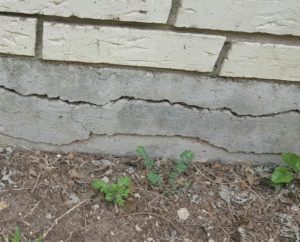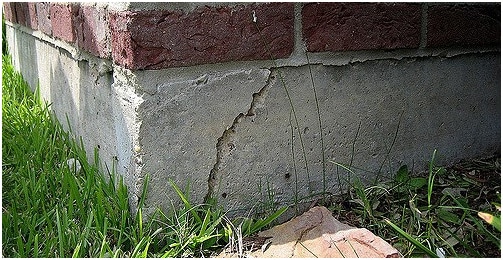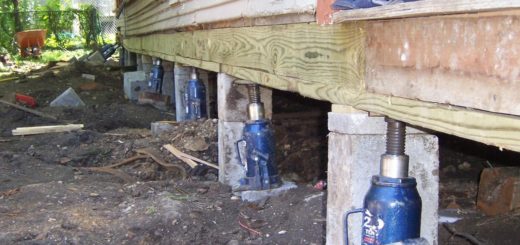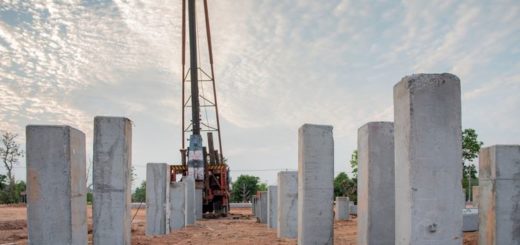Foundation Cracks types why they serious
Foundation cracks are very critical for structures even it is of minor nature. Usually, the foundations are constructed under the ground level. With the cracks, there could be considerable issues to the durability of concrete.
Why Foundation Cracks Serious
Foundation is the inception of the structure. Failure of the foundation leads to the failure of the whole structure. The following are can be identified as the main issues with the foundation cracking
- The crack could expose the reinforcement. In the presence of moisture and oxygen, reinforcement could cause cracking of the reinforcement.
- Minor cracks in the concrete lead to the result in increasing the crack width due to the expansion of concrete with the corrosion of reinforcements.
- The durability of the structure depends on the durability of concrete and reinforcements. Cracks could allow moisture to penetrate into the concrete and harmful chemical could cause deterioration of the concrete
- The most important issue the structural failure. If the crack is major, it could affect the stability of the structure.
Types of Foundation Cracks
There are different types of cracks due to the behavior or the construction issue of the foundations. Some of the foundation cracks are listed below.
- Horizontal Cracks
Mostly the horizontal cracks are appears in the foundations due to the thermal effects. Restrain condition of the foundation could lead to forming these types of cracks. In addition, water pressure such as water pressure could also lead to the formation of these types of cracks.
Providing adequate reinforcement will avoid these types of cracks.
- Vertical Cracks
Vertical cracks in the foundation could be a structural failure or maybe due to other reasons such as shrinkage effects, thermal effects, etc. The treatment of these types of cracks shall be done in consultation with a structural engineer.
- Stepped Cracks
Stepped cracks could be due to the settlement of foundations or shrinkage effects of the materials
- Diagonal Cracks
Diagonal cracks could be due to shear failure or torsional effects in reinforced concrete elements. In masonry foundation walls, it may be a shear failure, settlement, thermal effects, etc.
- Shrinkage Cracks
Shrinkage cracks appear at the early stage of the concrete when it gets hardened. There are different types of shrinkage in concrete.
In addition, shrinkage cracks could occur in the masonry work too.
Reasons for Foundation Cracks
There are many reasons for the foundation cracks as discussed in the following sections.
- Settlement of the Foundations
Settlement of the foundation could lead to cracks. Cracks in the foundation could be due to the additional stresses developed due to the settlement.
In addition, uneven distribution of the stresses could lead to cracks.
- Effect of Expansive Soil
Expansive soil expands when it is wet and shrinks when it dries.
An increase in the column of the soil leads to an increase in the pressure under the foundation. This pressure could even lift the tie mean system too in small buildings.
Rubble foundations are not that strong like concrete foundations. Upward pressure could not be born and they will crack.
- Structural Failures
Foundation could crack due to a structural failure. inadequate structural capacity could lead to structural failure. It could be considered a design failure.
- Errors
Design errors and construction errors could lead to foundation cracks.
- Corrosion of Reinforcement
Chemical attacks such as sulphate attacks and chloride attacks could lead to the corrosion of reinforcements. As a result, the volume around the reinforcement increased. This could lead to the cracking of foundations.
- Thermal cracks
An increase in the temperature of the foundation could lead it cracking.
The rise in the temperature due to the heat of hydration could lead to cracking. The temperature difference between the core and the surface and the temperature gradient is the key aspect to control the cracking.
Generally, the temperature difference and gradient are kept around 250C. It should be made sure to maintain the temperature within these limits during the construction
- Delayed Ettringite Formation
The rise of the temperature in the concrete during the hydration process is inevitable. However, allowing it to increase beyond a certain level is a high risk.
In general, the temperature of thick concrete is maintained at around 70-750C. If the temperature increase, it could form attributes with time. This is called the delayed ettringite formation.
Formation of the ettringite leads to an increase in volume and causes foundation cracks.
How to Avoid Foundation Cracks
It is the responsibility of the designer to assess the condition of the ground and the structure during the design. Correct design practices could avoid/minimize the foundation cracks.
- Craking of foundation due to the thermal effect can be controlled by providing reinforcements. Generally, we provide a bottom reinforcement net for the footings. The increase in the thickness could lead to the cracking of reinforcement.
Crack width could be checked with the grade of concrete used and as required, reinforcement could be provided. The thickness of pad footings greater than 500mm could be provided with crack controlling reinforcements.
- Concrete foundations are less change getting cracked due to the expansive soil conditions. However, rubble foundations constructed on the expansive soil could lead to crack.
Providing reinforced concrete beams or strips below the rubble foundation could avoid transferring the tensile stresses to the rubble foundations. Properly design tie beams/ground beams cold also minimize the cracking of this nature.
- Testing the soil and the groundwater makes us aware of the chemical attacks. Since durability is a major concern, concrete grade, water-cement ratio, minimum cement content can be selected based on the exposure class and the design life of the structure. That will minimize the durability issue and foundation cracks due to that.
- Formation of delayed ettringite can be avoided by reducing the heat of hydration of the concrete. Since the rise in the heat inside the concrete is represented by the temperature, we can monitor and control it.
Carrying out markup tests and obtaining the temperature data will be useful the make decisions. Further, the use of low heat cement, use blended cement such as the combination of ordinary portland cement and fly ash, etc reduce the heat. Cooling aggregate, using chilled water, concreting at night time, etc. also reduce the temperature rise.
How to judge Foundation Cracks
Cracks may appear anywhere in the foundations. It could be due to any of the reasons discussed above.
- Appearing the surface crack on the top of the footing could be due to the thermal cracks. Depending on the width of the crack the repair method shall be selected. In addition, the exposure condition of the structure could also be considered for this.
- Cracks having in the rubble foundation with increasing crack width towards the bottom of the foundation could be due to the settlement of the foundation.
- If the rack width increases at the top of the rubble foundation, it could be due to the upward movement of the soil which is due to the expansive nature.
- The crack could occur due to the shear failure of the footings or foundation. The could form at the shear perimeter in the foundation. Punching shear crack could be clearly visible and they can be identified clearly.
- There could be tension crack due to the yielding of reinforcements. They appear in the tension farce of the structure.
How to Repair Foundation Cracks
The repair method depends on the degree of the formation of the carks and the exposure condition of the foundation.
- Concrete Foundations
If the structure is located in a severe environment, all the cracks need to be repeated carefully.
Minor cracks that have not penetrated up to the reinforcements and have a very smaller width, could be prepared from the surface. A “V” groove can be cut and it can be filled with the nonshrink construction grout.
The wider crack could be sealed with epoxy grouts. The standard method shall be followed in the repair. Further, pressure grouting shall be used in this method.
- Rubble Foundations
Repairing rubble foundations are challenging. The method proposed for the concrete could also be used to repair the rubble foundations.
In addition, some modifications could also be done. For example, when the structure is constructed on expansive soil, we might need some modifications in the foundation to improve the structural capacity.





